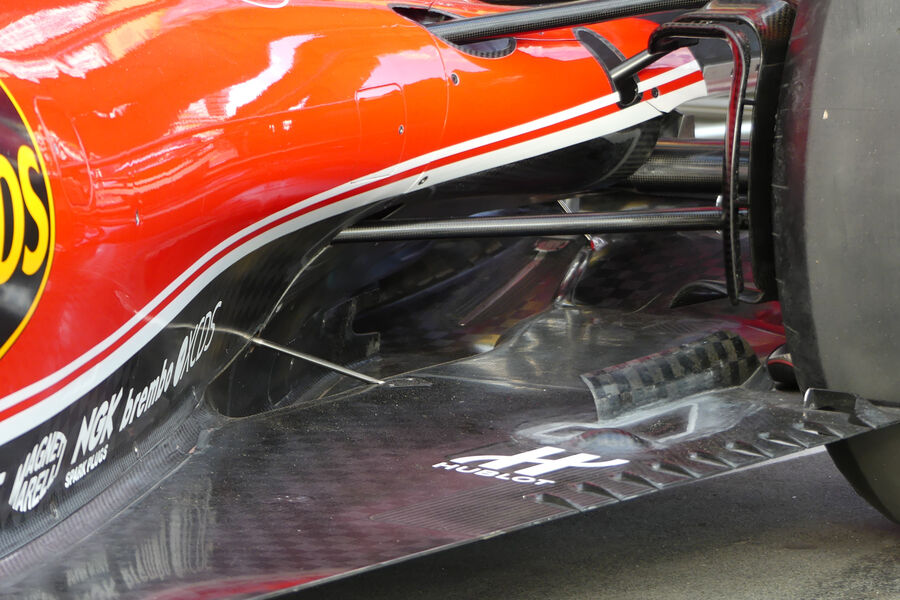Rear wing mounting pylon
While Toro Rosso has followed several design paths forged by others this season, it is one of the squad's designs that is now being proliferated up and down the grid.
As shown above, during 2015 the team used a rear wing mounting pylon that intersected with the exhaust, using, as is so common, a grey area within the regulations.
In doing so, it was able to trim a little weight, as it was no longer using a heavier inverted Y-Lon. The switch also has some aerodynamic payoffs, too. Firstly, this removed the circular Y-Lon from the equation, giving airflow exiting the engine cover one less obstacle to deal with.
Secondly, the mere fact that the exhaust has the pylon running through it means the exhaust plume is affected.
Although the engine manufacturers have gone to great lengths to design their turbo exhaust exit in such a way that is beneficial for performance, the plume generated is still likely to be more erratic than is desirable.
It can, therefore, be inferred that the pylon will act as a flow stabiliser, straightening the plume, perhaps not only improving things aerodynamically but indirectly improving turbo performance.
Even though it's using the 2015 Ferrari powerunit, Toro Rosso has retained its intersecting rear wing mounting pylon, whilst Ferrari [above], Haas [below] and McLaren have all copied the solution too.








